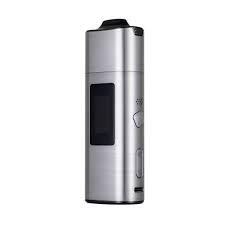Vaping has become a global phenomenon over the past decade, evolving from a niche alternative to smoking into a multi-billion-dollar industry. With sleek designs, customizable flavors, and varying nicotine strengths, Vape appeal to a wide range of users. However, the rise of vaping has also sparked debates about its safety, regulation, and long-term effects.
This guide explores everything you need to know about vaping—from how it works and its potential benefits to the associated risks and latest trends.
What Is Vaping?
Vaping refers to the act of inhaling and exhaling vapor produced by an electronic cigarette (e-cigarette) or similar device. Unlike traditional cigarettes, which burn tobacco to produce smoke, vapes heat a liquid (e-liquid or vape juice) to create an aerosol, commonly called vapor.
Components of a Vape Device
- Battery – Powers the device (rechargeable or disposable).
- Atomizer/Coil – Heats the e-liquid to produce vapor.
- Tank/Pod – Holds the e-liquid.
- Mouthpiece – The part through which the user inhales.
- E-Liquid (Vape Juice) – Contains propylene glycol (PG), vegetable glycerin (VG), flavorings, and often nicotine.
Types of Vaping Devices
- Cigalikes – Resemble traditional cigarettes; often disposable.
- Vape Pens – Slim, pen-shaped devices with refillable tanks.
- Pod Systems – Compact, use pre-filled or refillable pods (e.g., JUUL, Vuse).
- Box Mods – Larger, customizable devices with adjustable power settings.
- Disposable Vapes – Pre-filled, non-rechargeable, and easy to use.
Why Do People Vape?
1. Smoking Cessation Tool
Many smokers switch to vaping to reduce or quit cigarette use. Some studies suggest vaping may be less harmful than smoking, though it is not risk-free.
2. Variety of Flavors
From fruity to dessert-inspired flavors, e-liquids offer a wide range of tastes that appeal to users.
3. Social and Cultural Trends
Vaping has become a subculture, with cloud-chasing competitions and influencer marketing driving its popularity among younger adults.
4. Perceived Reduced Harm
While not harmless, vaping eliminates many toxic chemicals found in cigarette smoke, such as tar and carbon monoxide.
Potential Benefits of Vaping
1. Harm Reduction for Smokers
Public Health England (PHE) estimates vaping to be 95% less harmful than smoking. Switching may reduce exposure to carcinogens.
2. No Secondhand Smoke
Vapor dissipates faster than smoke and contains fewer toxicants, reducing risks to bystanders.
3. Controlled Nicotine Intake
Users can choose nicotine strengths, including nicotine-free options, allowing gradual reduction.
4. Odorless Experience
Unlike cigarettes, vaping doesn’t leave a lingering smell on clothes or breath.
Risks and Concerns of Vaping
1. Nicotine Addiction
Many e-liquids contain nicotine, which is highly addictive, especially for non-smokers and teens.
2. Unknown Long-Term Effects
Since vaping is relatively new, long-term health impacts are still being studied.
3. Lung Injuries (EVALI)
In 2019, a surge in vaping-related lung illnesses (EVALI) was linked to black-market THC cartridges containing vitamin E acetate.
4. Youth Vaping Epidemic
Flavored vapes have contributed to a rise in teen vaping, raising concerns about nicotine addiction and brain development.
5. Regulatory and Safety Issues
Lack of strict regulations in some regions leads to inconsistent product quality and counterfeit devices.
Vaping vs. Smoking: Key Differences
| Aspect | Vaping | Smoking |
| Combustion | No burning (heated liquid) | Burns tobacco (produces smoke) |
| Chemicals | Fewer toxicants | 7,000+ chemicals, 70 carcinogens |
| Nicotine | Adjustable levels (or none) | Fixed, high nicotine delivery |
| Smell | Minimal odor | Strong, lingering smoke smell |
| Secondhand Risk | Lower risk to bystanders | Harmful secondhand smoke |
Latest Trends in Vaping
1. Nicotine Salts
Smoother throat hit and faster nicotine absorption, popular in pod systems.
2. Disposable Vapes
Convenient, pre-filled devices dominating the market (e.g., Elf Bar, Puff Bar).
3. CBD & THC Vaping
Cannabis-infused vapes for medical/recreational use (regulated differently by region).
4. Smart Vapes
Bluetooth-enabled devices with usage tracking and temperature control.
5. Tighter Regulations
Many countries are banning flavored vapes to curb youth usage.
Is Vaping Right for You?
If you’re a smoker looking to quit, vaping may be a less harmful alternative. However, non-smokers, especially teens, should avoid it due to addiction risks. Always purchase from reputable brands and stay informed about local regulations.
Conclusion
Vaping remains a controversial yet evolving industry. While it offers smokers a potential harm-reduction tool, its popularity among youth and uncertain long-term effects warrant caution. As research continues, regulations and public awareness will shape the future of vaping.



